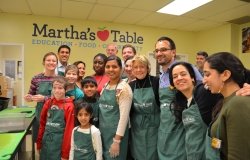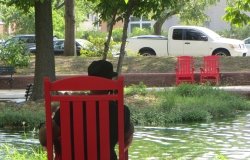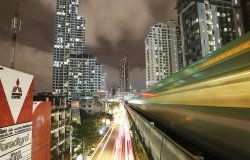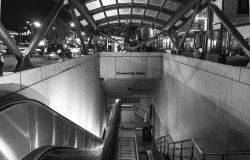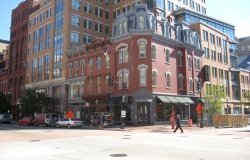Fight not Flight: Lessons from Detroit
The re-distribution of urban resources that we see all around us is producing new “winners” and “losers” in urban political and economic life with all of the consequent tensions and discontent that can be imagined. Either glorified or pilloried, American cities appear to be experiencing a dramatic dislocation in which all the rules of the game are being ripped up and re-written in cyberspace, writes Blair Ruble.
Several of the speakers at the recent Meeting of the Minds in Detroit – including Mayor Bill Peduto of Pittsburgh, Mayor Dawn Zimmer of Hoboken, together with several foundation and community leaders from Detroit itself — echoed one simple sentiment: “We aren’t going to lose our community on our watch.” This sense of identification with and responsibility for community constitutes an important component of urban resilience. Significantly, speakers underscored how “not losing” one’s community is not just about keeping things as they are. The durable message emerging from the forum is that “not losing” a community or a city requires making them new, different, and better. If, in the past, the human fight or flight response has led middle class Americans to flight from so-called declining urban communities, over the past ten years the opposite has happened. People now are much more willing to fight than to flee. Why is this so?
Community members, of course, throughout history have made a choice to stay and fight and fighting rather than flee, so that the decision to renew rather than to abandon should not completely surprise. What is striking about the speakers in Detroit was that they represent a new generation of leaders from many who created the challenges their cities now faces. Often in their 30s, 40s, and 50s, the community and elected officials featured at the Meeting of the Minds Forum reflected different life experiences than their parents, for whom the dream of a quiet life in suburbia appeared more attractive. For the postwar generation, the suburbs represented an elusive utopia come to life; for their children, suburbia was just one more all-too-human environment with challenges and disappointments as well as opportunities and hope.
Much is being written about the impact of so-called “Millennials” on American cities. The dramatic movement of twenty- and thirty-somethings into urban centers appears to be driving some of the most profound re-positioning of how Americans live their lives since the suburbanization wave embraced by their grandparents. The arrival of younger, often whiter and resource-rich residents in historically impaired inner-city neighborhoods across the United States has touched off a wave of social change that often has been pigeon-holed by the term of “gentrification.”
The re-distribution of urban resources that we see all around us is producing new “winners” and “losers” in urban political and economic life with all of the consequent tensions and discontent that can be imagined. Either glorified or pilloried, American cities appear to be experiencing a dramatic dislocation in which all the rules of the game are being ripped up and re-written in cyberspace.
Great debates among learned observers swirl around whether or not these transformations are simply “life-cycle” effects in which younger Americans are starting families later, thereby delaying but not reversing the move to the suburbs; or, alternatively, represent a profound and fundamental shift in how Americans will live their lives. Whichever side of that debate proves to be accurate will carry enormous policy implications for city leaders.
The discussions in Detroit revealed a much more complex set of forces at work. A commitment to re-inventing urban communities runs deeper than the glibbest commentaries about “Millennials” and “gentrification” might imply. Rather, the recent Meeting of the Minds put on display a much more profound evolution in the American relationship to the city in which the parents of the new urban residents have begun drawing their own line in the urban sand; fighting rather than to fleeing in the face of deep social, economic, technological, and even climate change. They have done so by creating partnerships unimaginable to their parents, seeking out practical and efficient solutions to noisome problems; and doing so with great determination and vision; patterns which are second-nature to their Millennial offspring.
Rip Rapson, President and CEO of the Kresge Foundation began the Meeting of the Minds by speaking about some of the lessons we might draw from the recent experiences of Detroit. The Kresge Foundation has been a leader in helping Detroiters work through problems of extraordinary complexity.
The Foundation has supported projects small and large, working closely with state, city, and community officials and activists to invest in the city, while encouraging the private sector and other philanthropy organizations to support efforts to enhance municipal services and the city’s quality of life. Simply put, he observed, the city can’t do it all itself.
Rapson continued that Detroit’s transformation of city has been remarkable in part because of early investments which now allow others to invest more. To intensify the city’s challenges, he continued, the total number of blighted properties in Detroit roughly equals the territory of the City of San Francisco. Drawing on support from foundations such as Kresge, the city dispatched young people with iphones to inventory the complete city. This survey is being used to help the city better understand the condition of neighborhoods and is now combing that survey with other information from foreclosures, taxes collection, water use to enable officials to make better informed decisions about what must be demolished, what can be recycled, and what can be saved. Their effort identified around 81,000 abandoned properties in the city (which is to be expected given that Detroit has lost more than two-thirds of its population from a high of 2.6 million in 1955 to 700,000 now), and offers is an ideal example of public-private-philanthropic engagement.
These same local partnerships are working together to develop a regional transportation system connecting the city and the suburbs in the absence of public leadership. For example, the Woodward Light Rail system, which will carry its first riders in 2016, is funded almost completely by private and philanthropic donors who have funded the $150 million project now under way.
Rapson and his colleagues – like Mayors Peduto and Zimmer in their communities – have demonstrated deep commitments to their communities which go far beyond a model of social change which begins and ends with arriving newcomers. The process of rejuvenating American cities runs deeper than the headlines of the day. The commitment of newly arriving younger urban residents is an important part of a dramatic story of renewal unfolding in many American cities. It rests on a far more profound and no less important story: the emerging multigenerational commitment of city residents across urban America to stay rather than flee.
About the Author

Blair A. Ruble
Former Wilson Center Vice President for Programs (2014-2017); Director of the Comparative Urban Studies Program/Urban Sustainability Laboratory (1992-2017); Director of the Kennan Institute for Advanced Russian Studies (1989-2012) and Director of the Program on Global Sustainability and Resilience (2012-2014)

Urban Sustainability Laboratory
Since 1991, the Urban Sustainability Laboratory has advanced solutions to urban challenges—such as poverty, exclusion, insecurity, and environmental degradation—by promoting evidence-based research to support sustainable, equitable and peaceful cities. Read more


